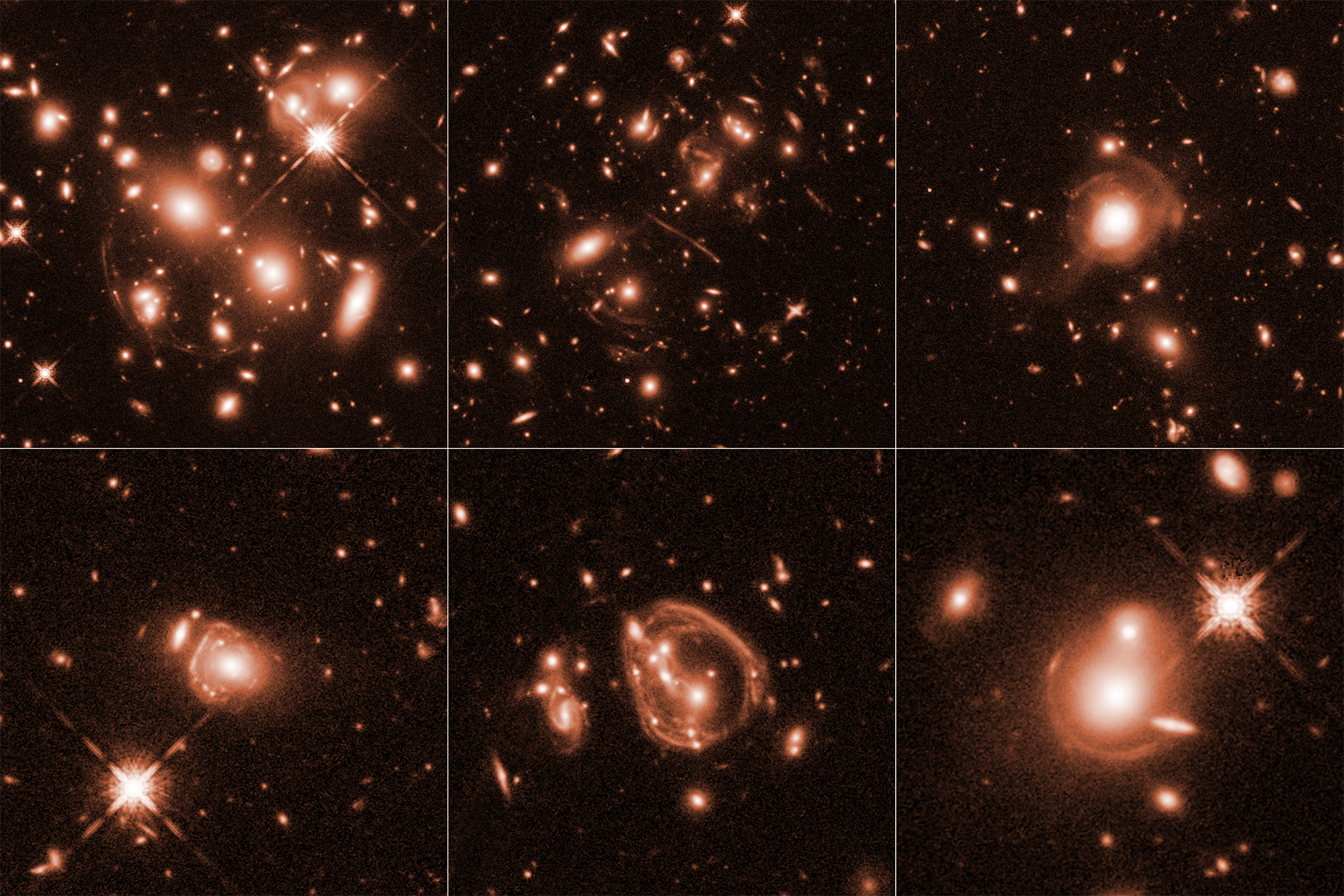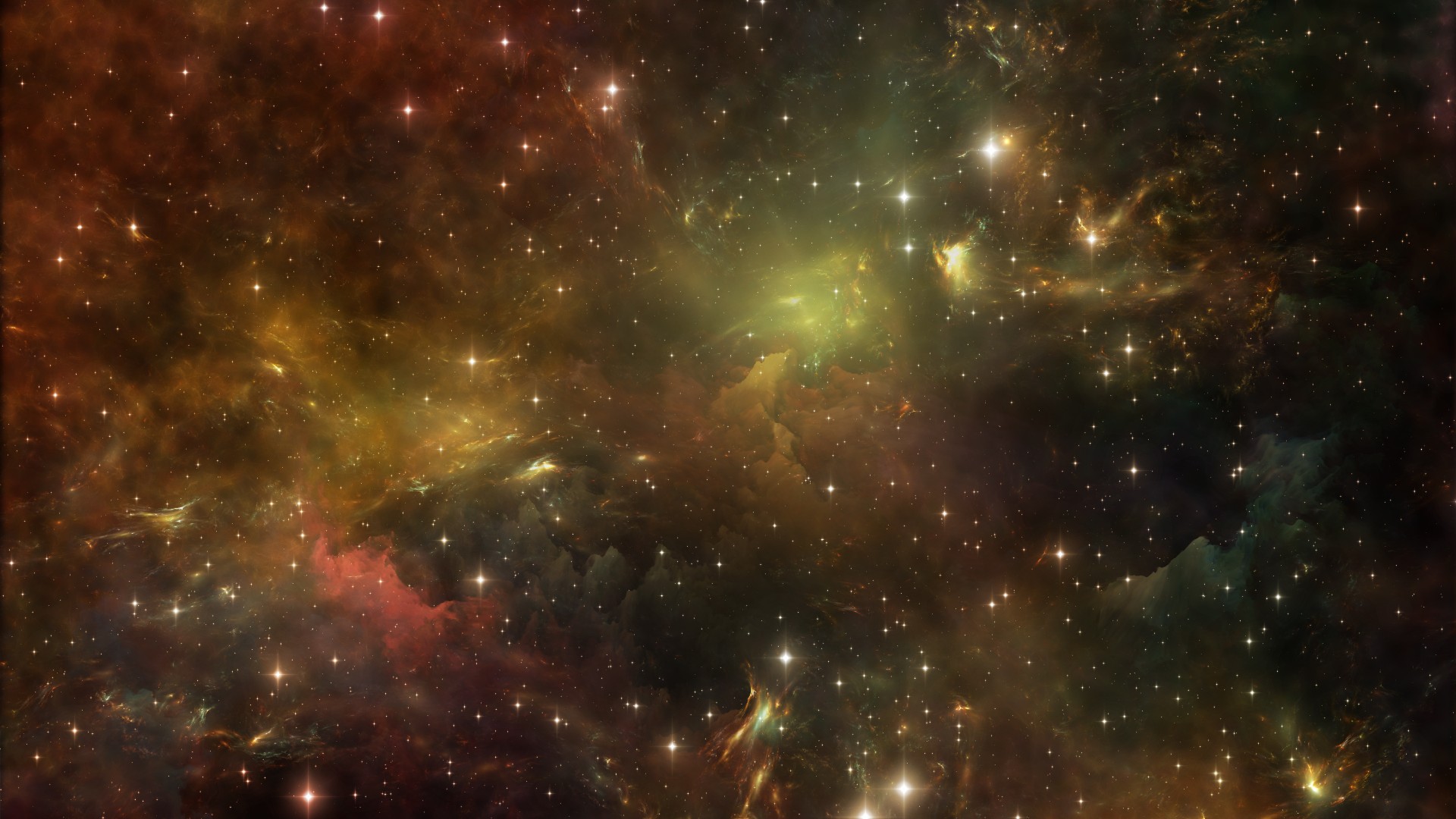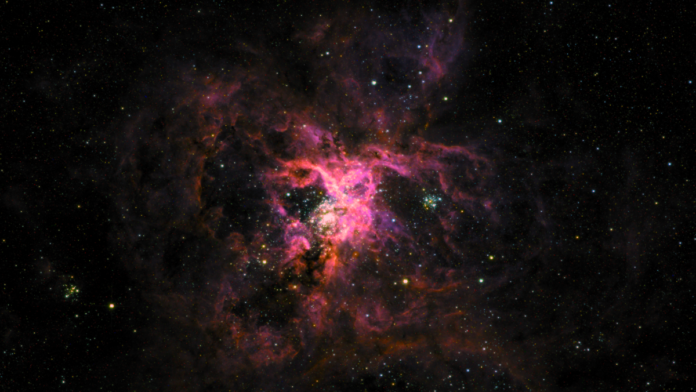A balloon-based telescope may help astronomers unravel the mysteries of dark matter after its first images of the cosmos from the edge of space.
The Super Pressure Balloon Imaging Telescope (SuperBIT) was carried to an altitude high over Earth’s atmosphere on April 16 by a NASA helium balloon the size of a football field. It was the first operational flight by the stratospheric observer.
The first images taken on the flight include a region of the Large Magellanic Cloud, which is a satellite galaxy of the Milky Way, called the Tarantula Nebula. The galaxy is located around 160,000 light years from Earth. This massive 931 light-year-wide cloud of gas and dust is a region of intense star formation. (For perspective, the nearest star system is about four light-years away from Earth.)
Related: How much of the universe is dark matter?
SuperBIT also caught images of the Antennae galaxies, NGC 4038 and NGC 4039, located around 60 million light-years away towards the southern constellation of Corvus. These galaxies are seen undergoing a collision and merger that astronomers suspect began a few hundred million years ago. The Antenna galaxies are thus the nearest and youngest examples of a pair of colliding galaxies.
The main aim of SuperBIT will be to capture images of galaxies in the visible-to-near ultraviolet light spectrum. While the Hubble Space Telescope’s capabilities cover that band, SuperBIT has a wider field of view than the space telescope launched in 1990.
Related: Hubble Space Telescope spies odd pair of galaxies near Big Dipper (photo)
(opens in new tab)
How SuperBIT will investigate dark matter
SuperBIT’s investigation take advantage of a natural phenomenon called gravitational lensing, to map dark matter. Gravitational lensing was first predicted in Einstein’s theory of general relativity. It happens because, just like balls of increasing mass placed on a stretched rubber sheet, objects of tremendous mass like galaxies warp the fabric of spacetime.
When light passes along this curvature, its path is bent. This curving of light can magnify objects, and it can also tell astronomers a lot about the massive object doing the lensing, particularly how the object’s mass is distributed.

(opens in new tab)
Dark matter doesn’t interact with electromagnetic radiation or light as ordinary matter that surrounds us on a day-to-day basis does. This makes dark matter virtually invisible, but thanks to the fact it does interact with gravity, astronomers can infer its presence.
Gravitational lensing is thus an excellent way to map dark matter’s distribution. SuperBIT could help scientists determine if dark matter particles can bounce off each other, when neighboring galactic clusters collide. This research could finally reveal what particles make up dark matter.
“It takes the gravity from an entire galaxy to move dark matter, and SuperBIT will look at clusters of galaxies that happen to be colliding with each other. Essentially, we’re using the largest particle accelerators in the universe, to smash lumps of dark matter and see where the bits fly,” Durham University professor of physics, Richard Massey, said in a statement (opens in new tab). “If dark matter goes ‘crunch’, or if bits are chipped off, we could finally start to learn what it’s made of.”
Related: Is the origin of dark matter gravity itself?

(opens in new tab)
Advantages of a balloon-based telescope
SuperBIT, which is a collaboration between NASA, Durham University in the U.K., Canada’s University of Toronto, and Princeton University in the U.S., launched from Wānaka, New Zealand.
The telescope and its super-pressure balloon ride can circumnavigate the globe at an altitude of around 21 miles (34 kilometers) above over 99.5% of Earth’s atmosphere for 100 days. From that vantage point, it collects scientific data and takes high-resolution images. The balloon’s high-altitude view provides a clearer view of light that has traveled billions of years from galaxies in the distant and early universe, unhindered by the blurring effect of the atmosphere.

(opens in new tab)
SuperBIT can be safely returned to Earth by parachute, so that the team can update its design. The SuperBIT team has already acquired funding to upgrade the 1.6 feet (0.5-meter) aperture telescope to 5.2 feet (1.6 meters), adding a wider-angle lens and increased megapixels for the camera. The improvement will boost its light-gathering power by 10 times.
A balloon-carried telescope is more economical than a rocket-launched instrument. SuperBIT cost about $5 million, which is almost 1,000 times less than an equivalent satellite mission. The relatively cheap cost of SuperBIT could allow a fleet of such telescopes to eventually glide over Earth, probing the mysteries of the universe, according to NASA officials.
Follow us on Twitter @Spacedotcom (opens in new tab) or Facebook (opens in new tab).

